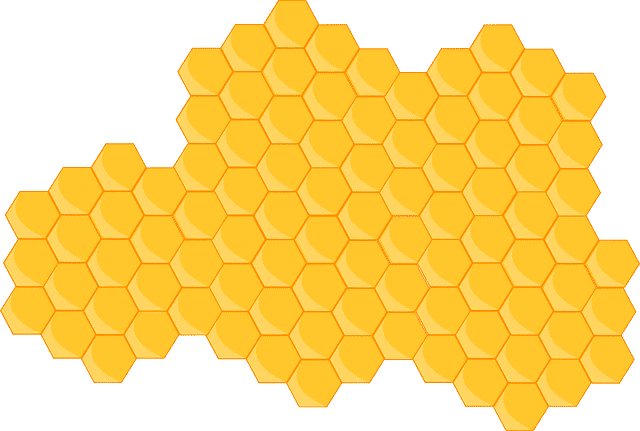
A hexagon is a polygon that has six sides and six interior angles.
In Greek is where we can find the etymological origin of the term hexagon that concerns us now. Specifically, it must be determined that it is the result of the sum of two lexical components of that language:
-The word “hexa”, which can be translated as “six”.
-The noun “gono”, which is equivalent to “angle”.
Therefore, the literal meaning of this word is “six angle” polygon.
The concept refers to a polygon that has six sides and six angles .
Hexagon in geometry
Let us remember that the idea of a polygon is used in geometry to refer to the fragment of a plane that is delimited by straight lines . It is, therefore, a flat geometric figure . The lines that make up polygons are called sides .
In the specific case of a hexagon, it is a figure that is limited by six sides (that is, by six line segments). Due to its configuration, it also has six internal angles and six vertices . The vertices are, for their part, the unions between two segments.
However, we must not forget the presence of apothems in the hexagons. These are the distance between the center of the aforementioned polygon and one of its sides or segments. In the same way, diagonals are also found in a hexagon. Specifically, there are nine and they are each of the lines that unite what is one vertex with another within the same figure.

The cells of a honeycomb are hexagon-shaped.
Some features
The sum of the measures of the internal angles of this type of polygon is equal to 720º . On the other hand, it is possible to affirm that a hexagon has 9 diagonals , understanding each diagonal as the segment that allows two vertices that are not consecutive to be joined.
When the hexagon has six equal sides and also six equal internal angles , it is called a regular hexagon . In these cases, the interior angles are congruent : they all measure 120º (120º x 6 = 720º).
To calculate the perimeter of a regular hexagon, you will have to multiply the length of one of the sides by six.
If, on the other hand, the sides and internal angles of the hexagon are not equal to each other, the figure is called an irregular hexagon .
Hexagons in nature and symbology
It is possible to find hexagons in different areas of nature . Bee combs , for example, are formed with wax cells that have a hexagonal structure. The Saturn hexagon , on the other hand, is a cloud pattern that is located around the north pole of said planet, with six sides of about 13,800 kilometers each.
You should know that the aforementioned Saturn hexagon was discovered in the 1980s, specifically in 1981, during the mission carried out by NASA's Voyager.
Within the scope of symbology we have to highlight that regular mention is also made of the hexagon. Specifically, in this case and among other meanings, it is identified with the continuous and permanent movement of what creation is.
